Reptilia
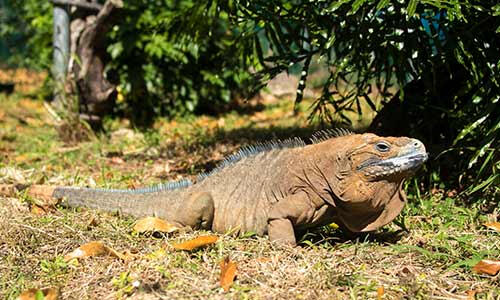
Cyclura collei, commonly known as the Jamaican iguana
Most reptiles are ectothermic, relying on the environment for body heat. This limits them to tropical and temperate regions, particularly the tropics. Impermeable scales cover their skin, and they can efficiently retain water; their eggs, unlike amphibians, have a hard shell and do not depend on external sources of water for development, allowing them to colonize even dry environments. The egg is fertilized inside the female's body before the eggs are shed.
Some spend all or part of their lives in fresh water, such as crocodiles (although some may migrate to marine habitats), turtles, and water snakes. Most snakes are terrestrial in nature, whether arboreal (in trees) or fossorial (burrowing).
Examples of Reptilia

Hydrosaurus pustulatus in Burauen, Leyte
Reptilia is separated into three major extant orders: Testudines (turtles), Crocodylia (crocodiles), Squamata (snakes and lizards), and Rhynchocephalia (tutara, the only one living species). There are some 7500 to 8000 species of reptiles, with squamates comprising the vast majority.
Commonly known as the Philippine sailfin lizard and locally called the ibid, Hydrosaurus pustulatus (shown above) is a species of lizard endemic to the Philippines. It is oviparous, laying their eggs outside the female's body. Flattened toes allow them to run across water. They live in areas near water such as rivers, riverbanks, rice fields, and mangroves. Due to habitat loss and collection for pet and food trade, they are now classified as vulnerable by the IUCN.
Cyclura collei (shown here), also known as the Jamaican iguana, is considered the rarest lizard in the world. Endemic to Jamaica, they are classified as critically endangered with some 100 to 200 in the wild. They were even declared extinct in 1948, before a small population was rediscovered in 1990.
Reptilia in the Philippines
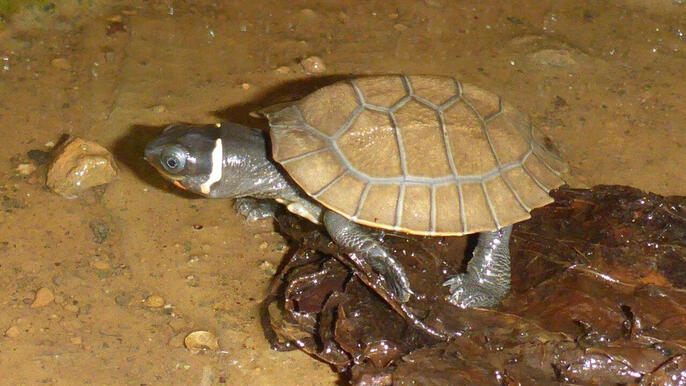
First captive born Siebenrockiella leytensis named "Sonja"
The Philippines is home to a lot of species of reptiles, and many are endemic and can only be found in the country. Luzon contains at least some 108 native species of reptiles, with 76 unique to the region. Mindanao was called an "epicenter" of southern Philippine biodiversity, with at least some 85 species of reptiles documented in a study in 2016.
As in most sectors, however, illegal practices are still present. Illegal domestic trade of Siebenrockiella leytensis (the Philippine forest turtle, shown above) was still present in major pet markets in Manila from 2005 to 2009.
Illegal reptile trade in the Philippines was also observed on the online platform Facebook in 2016. Advertisements included even critically endangered species such as Crocodylus mindorensis (the Philippine crocodile) and Siebenrockiella leytensis (the Philippine forest turtle, shown above). Over 5,000 individual species of reptiles were identified from 90 Facebook groups.
Under the Philippine Wildlife Act of 2001 (Republic Act No. 9147), appropriate permits must be secured for legal collection, possession, transport, export, import, and introduction into the wild of wildlife; threatened species, in particular, may only be possessed for scientific or propagation purposes.
Aves
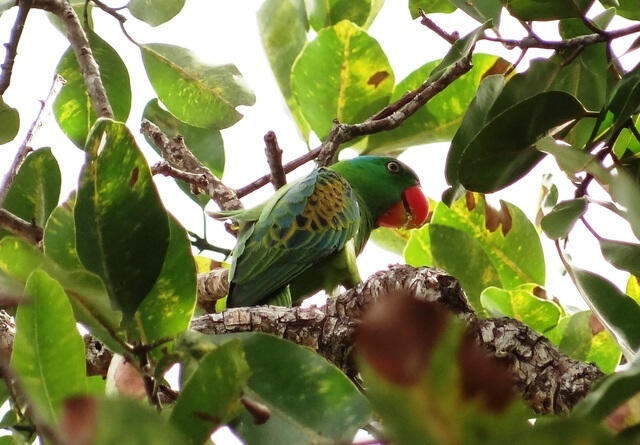
Tanygnathus lucionensis in Sabang Beach, Baler, Aurora
Birds are a very diverse group of animals, comprising some 10,000 extant species all across the world. With small bodies optimized for flight, they are characterized by the presence of feathers for flight, display, thermoregulation, and egg brooding. They only have one functional ovary and oviduct. Birds mature quickly and can mature in a matter of weeks or months.
As endotherms, they are capable of maintaining their own body temperatures. Their forelimbs were modified into wings. Instead of teeth, they have developed a lightweight beak. They also have four-chambered hearts. Although they possess keen vision, their sense of smell and hearing are less developed.
Eggs are laid in nests. Parents incubate the eggs from around 11 to 80 days and the young are fed for by their parents. Some birds are able to fly shortly after hatching, while others spend some time learning before being able to.
Examples of Aves
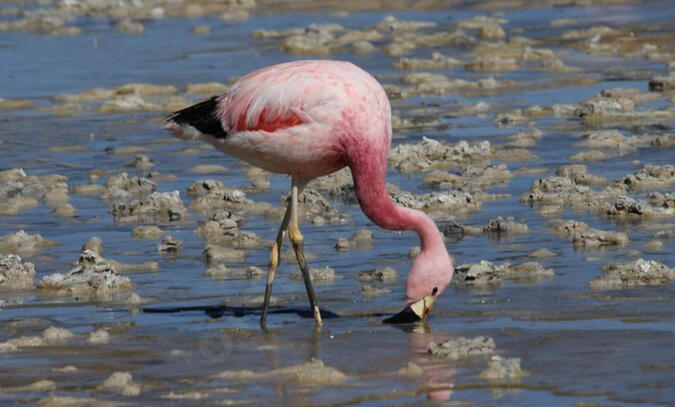
Phoenicoparrus andinus in Laguna Colorada, Bolivia
Current extant birds are divided into two major groups: Palaeognathae (flightless birds) and Neognathae (the remaining species).
Phoenicoparrus andinus (shown above), commonly known as the Andean flamingo, is an example of a flightless bird, as all flamingos are. They live in the Chilean Andes of South America. The young are grey before developing a light pink plumage. They lay one egg at a time, with both parents incubating the egg for about a month. They are classified as vulnerable by the IUCN.
Aves in the Philippines
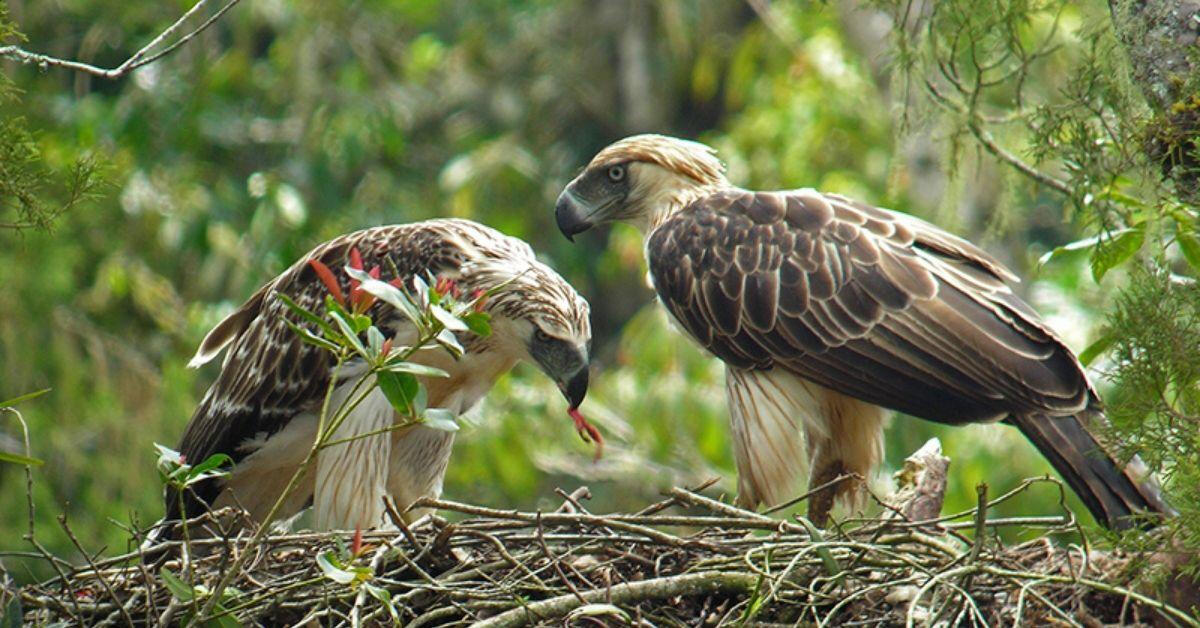
A pair of Pithecophaga jefferyi
The Philippines has a very diverse population of birds with some 700 species, of which around 200 are endemic.
The national bird of the Philippines is Pithecophaga jefferyi, commonly known as the Philippine eagle or monkey-eating eagle. It is endemic to the forests in the Philippines and can be found on the islands of Leyte, Luzon, Mindanao, and Samar. Brought about by habitat loss, hunting, and severe weather events, it has been classified as critically endangered by the IUCN.
The bird on the back of the 500-peso bill is Tanygnathus lucionensis (shown here), commonly called the blue-naped parrot or pikoy. They can be found all over the Philippines, although classified as near threatened by the IUCN.
Illegal hunting is still present. In August 2015, a Philippine eagle named "Pamana" was found shot dead in a creek in Mt. Hamiguitan Range, Davao Oriental. Pamana was first rescued by the Philippine Eagle Foundation (PEF) in 2012 and taken care of for two years before being released into the wild in June 2015, just two months before being found dead.
Last January 2021, a Philippine eagle was found trapped in thorny rattan vines in Barangay Ticulab, Kiamba, Sarangani. Upon examination, two bullets were found under its skin and the incident was to be investigated as a possible violation of the Philippine Wildlife Act of 2001.